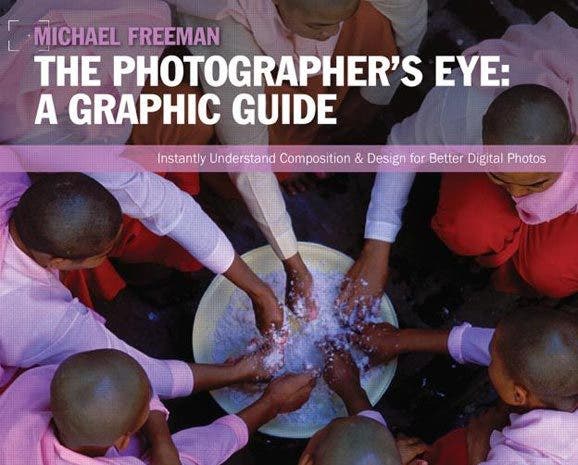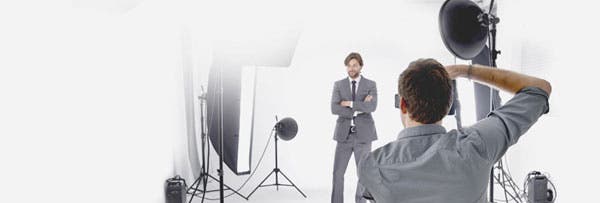Exploring camera angles that will make your photos pop
Choosing a subject is difficult enough but choosing the location and viewpoint from which to shoot is yet another layer to consider. The more iconic the subject, the harder you will have to work to find an original and fresh viewpoint. Be ready to ask for help, to wedge yourself into a tight space for an innovative angle, and to travel to the full expanse around an area to consider the subject from all approaches.
Pick a location or subject that piques your interest and exercise due diligence in your research and brainstorming of your approach. Proper planning has a way of ending up in the final frame. Here’s some viewpoint tips to get you started:
Four Square
Sometimes criticized for being unimaginative, but in fact very useful and simple, a four-square viewpoint faces its subject head-on, frontally, with all the major lines squared up and rectangular. Magazine picture editors and art directors like it, especially for covers, because the horizontal and vertical alignments take headlines, mastheads and other typography very well. For it to work, you need to be very careful about centering the camera and leveling it; a grid overlay on the viewfinder or live-view LCD is always useful. This is easier with a standard or longer focal length than a wide angle. Because it is such a practical, open-eyed approach, some people have delusions about it being somehow more objective and “straight.” It certainly looks as if you’re approaching the subject head-on and without fancy dramatic angles, which is why it has become the treatment of choice for documenting things, people and places. One thing to keep in mind: when coming at the subject from a slight angle the shot becomes more casual and less deliberate.
High
Overviews appeal to our sense of wanting to see things laid out before us. The bird’s-eye view is a privileged one, somehow commanding and putting us in charge. An illusion, of course, but a pleasant one. Tall buildings and cliff tops are all co-opted these days for this experience, and the scenic overlook is a sign-posted stop on a national park route. Aircraft and even balloons join in as desirable camera platforms. One thing often missing from these vantage points is the evidence of the viewpoint itself. Admittedly, you may not actually want it interfering with the view, but there are times when it adds to the scene.
Showing without showing: The problem here, on a small and rarely visited island in Indonesia, was how to make the most effective image of a 19th century iron lighthouse, showing its delightful setting. In other words, combining two elements: the lighthouse plus tropical context. I tried many, but far and away the most successful was the almost aerial view from the top, making sure I waited until later in the day when its shadow was longer. The lighthouse is the subject without actually appearing in the picture.
In the four shots to the right, you can see my first strategy was to shoot from down low, aiming up with a wide angle to incorporate foreground features and also some of the surrounding setting. They’re all decent shots, but were nevertheless lacking somehow. After some brainstorming I went up to the very top of the lighthouse itself, from which the view was amazing – except of course I couldn’t see the lighthouse directly. I could tell, however that as the sun set it was going to cast a huge shadow stretched out from the island and into the clear blue water beyond. That was the shot.
Overhead
Overhead is an especially tempting viewpoint, because it is so easy to imagine and yet usually difficult to reach. Standing in front of your subject, you look up and think “bird’s-eye view,” because from above is likely to be a privileged view, not available to most people, and that alone suggests a different image. The search for visual surprise becomes all the more pressing when the subject is well known and already thoroughly photographed such as Stonehenge, one of the United Kingdom’s top tourist attractions. Overhead gives a plan view, which often holds out the possibilities of a shape of some kind, and the broken circle of gray stone sits nicely on a field of green. The only way was a helicopter, and shooting from this, as from any aircraft, means an open door or window, and the pilot circling tightly so that you have a constant view downward.
Low
One good reason for shooting from a low point (kneeling rather than standing) is to take in less of the foreground, such as a sidewalk or a street. Another is to inject some angles – a little drama and presence into the picture. This was the idea for a shot of a horse caravan that eventually became the cover of the book I was shooting. I had already chosen the site, which was an old lane in an old Chinese town, one that had a nicely curved and whitewashed wall – a near perfect frame for the horses and men as they walked by. I also had time to prepare, and a ground-level viewpoint would not only show more of the horses against the white wall, but also make it simply a more interesting image if I shot with a wide-angle lens, lying flat on my back.
Looking through
For most people, not necessarily just photographers, a viewpoint suggests a good view, meaning clear, and looking out over a worthwhile scene without obstructions. Scenic drives are punctuated by these, constructed helpfully by authorities promoting tourism. Clear views can become obsessive. Ansel Adams wrote at length about one overlooking Yosemite that he visited many times for its “marvelous vista,” and how the camera position was limited. While all this is true and normal, there is another approach, which is to give the audience the subjective view of being there and coming across the view for themselves. This is what art director Lou Klein suggested I do for a book on an Akha hill community in northern Thailand, saying “I want to feel what it’s like to walk down the hill through the forest and finally come upon the village.” I obliged with this shot that deliberately uses unfocused tree trunks so that we know we’re walking toward the edge of a forested slope and about to enter the village, waking at sunrise. Not a neat view, but more personal, and perhaps with more of a sense of place.
Close
Not to be confused with close-up, which is more to do with magnification of small things, a close viewpoint means a sense of being right up against your subject. It also involves shooting rather closer than most people would consider normal, perhaps even more than feels comfortable, but there are ways to make this an advantage. Often, there are practical reasons for a close viewpoint, and not just because there is no free room to stand back. There may be obstructions in the way, as any architectural photographer knows: photographing a building from across the street may take in unwanted telegraph lines or power cables, forcing you to move closer and use a wider-angle lens. But close is also by definition intimate, and this can be very good in the right situation, such as here, in a daycare center for young children. Right down at this child’s level, and really close, there’s a personal and emotional connection. Stepping back would have given a cooler, less involved image. Close viewpoints don’t always mean wide-angle lenses; this was shot at close to normal (48mm) but tight framing helps the close effect.
Distant
There’s an important difference between being far away from something and showing distance. I’m not splitting hairs. If the subject is far away, you can use a telephoto lens to bring it closer in the frame – a very functional way of dealing with the situation. If you want to see something more clearly, in more detail, you fill the frame with it and it’s one of the prime uses of the telephoto end of a zoom lens. But what may be missing from the equation is a sense of distance. Only “may,” because there are telephoto shots that do have a strong sense of distance. That works when the viewpoint is quite high. It doesn’t depend so much on the lens. What it depends on instead is a sense of visual clues that show the viewer the distance between us and the subject. Here in Big Bend National Park in Texas, this view of the distant Chisos Mountains was shot with a wide-angle lens – large format, but the equivalent to 21mm. The viewpoint is slightly raised so that we can see from the foreground all the way to the mountains. Also at work is the framing, taking in a lot of sky. Quite an interesting sky, but the point is, with all these different clouds, it’s a sky that shows distance by towering over the mountains.
Michael Freeman is a renowned international photographer who specializes in travel, architecture and Asian art. He explores new approaches to photographic composition in his new book “The Photographer’s Eye: A Graphic Guide” from Focal Press. Freeman has released a total of 135 books selling more than 4 million copies. His professional shooting ranges from reportage to architecture and special effects. Hallmarked by a 30-year collaboration with Smithsonian magazine, Freeman is a veteran professional editorial photographer working for major international publications.
Want more great tips from Michael Freeman visit: https://www.adorama.com/alc/search/node/Michael%2520Freeman





